Chepstow Castle
Some castles enchant, some castles impose, and some castles impress. In Chepstow on the banks of the Wye, you’ll find a castle that ticks all those boxes and so much more.
Chepstow Castle doesn’t just tell a story in stone and structure, it writes a veritable library on the history of castles, their role, and their significance.
The Castle is acclaimed as the oldest stone fortification in post-Roman Britain and was originally known as Striguil, which is derived from the Welsh word ystraigl meaning "river bend".
For over six centuries the richest and most powerful movers and shakers of the medieval and Tudor era set up home here and left their mark, as they enjoyed a life of luxury and opulence far removed from that of the general population they lorded over.
The story begins in 1067 with William the Bastard’s old buddy Earl William Fitz Osbern, who was keen to turn the vastly important strategic site into one of the first Norman strongholds in Wales. The Earl succeeded in fine style. The limestone cliffs it is perched upon like a watching and fearless Eagle are a testament to its excellent defensive location and its defining factor as a fortress on the borderline between England and Wales.
The Great Tower was finished in 1090 and was unusual for its time in that it was constructed of stone and not wood. This was thought to be a show of strength by the Normans who wanted to intimidate the Welsh king Rhys ap Tewdwr.
During his time at the castle, the Earl of Pembroke William Marshall exploited the knowledge he had gained during the Crusades and added further fortifications in the 1190s, including the first twin-towered gatehouse in Britain and the oldest surviving doors in Europe, whose sheathed iron plates and elaborate lattice framework can still be seen on display within the castle’s grounds.
Marshall was undoubtedly the castle’s most interesting resident. After Richard the Lionheart offered him the rich de Clare heiress Isabel’s hand in marriage for his loyally and skill on the battlefield, the young knight-errant was transformed into one of the richest men in the kingdom thanks to his wife’s family's sprawling estates, which included Chepstow Castle.
On King John’s orders, Marshall would go on to negotiate the Magna Carta and rule as regent of England for the young King Henry III until he died in 1219.
When you visit Chepstow Castle and marvel at such landmarks as Marshall’s Tower spare a thought for the man whose identity is wrapped up in these very stones.
In 1270 the Earl of Norfolk, Roger Bigod set about building more walls and more towers in time for King Edward 1, who visited the castle on his triumphant tour of Wales in 1284.
The castle’s size and the size of its garrison meant that Glyndwr decided to avoid attacking it during his great rebellion, and in the wake of King Henry VIII’s Laws in Wales Acts of 1535 and 1542, in which he abolished the Marcher lords' autonomous powers, it becomes more of a great house for various lords and ladies rather than a clifftop fortress.
During the Civil War, the castle became a battleground between Royalist Monmouthshire and Parliamentarian Gloucestershire. It eventually fell to Parliamentarian forces on 25 May 1648.
In the aftermath of the war, the castle was sometimes used as a political prison, and Henry Marten,
one of the Commissioners who signed the death warrant of Charles I was confined here after the restoration of the monarchy until he died in 1680
In the late 18th century the castle became a picturesque" feature on the Wye tour and today its presence continues to overshadow the entire town of Chepstow and capture the eye and imagination in a way only that which is very old and has a tale to tell can.
Skenfrith Castle
In 1587 Thomas Churchyard wrote a little ditty called “The Worthiness of Wales: A Poem.” In it, he celebrates what has become known in Monmouthshire as “The Three Castles.”

In the words of Churchyard, “Three castles fayre, are in a goodly ground, Grosmont is one, on hill it builded was; Skenfreth the next, in valley it is found, The soyle about, for pleasure there doth passe. Whit Castle is, the third of worthie fame. The countrey there, doth beare Whit Castle’s name. A stately seate, a lofite princely place, whose beautie gives, the simple soyle some grace.”
Standing on the banks of the Monnow, Skenfrith Castle is also known as the vanished castle because so much of it has been lost to history and memory.
Yet its location in sleepy Skenfrith, its proximity to the languid Monnow, and its abundance of rolling lawns to kick a ball, or chill with a liquid lunch on make it a charming spot to spend a Sunday afternoon as you contemplate the beauty of the surrounding hills and the immeasurable changes wrought by the indifferent hand of time.
In Welsh, the castle is known as Ynysgynwraidd which translates as “isle” or “water meadow” of Cynwraidd, which was the name of a Welsh chieftain living here in the sixth century.
The beginnings of the castle were established by those passionate fortress-building colonials, the Normans, not long after William the Bastard’s invasion in 1066. Its original purpose was probably to protect the route from Wales to Hereford.
In the wake of a significant Welsh revolt in 1135, King Stephen grouped Skenfrith, Grosmont, and White Castle together under the banner of the Three Castles, and together they continued to repel Welsh attackers for centuries.
Skenfrith’s most notable feature is its round keep and although it’s now hard to visualise, there used to be a moat here similar to the one still in existence at White Castle.
On the same grounds as the castle you’ll find Skenfrith Church which is dedicated to the Irish saint, Bridget.
It’s one of the oldest churches still in use in the county, and in addition to its notable wooden belfry, inside you’ll also the tomb of the Morgan family and a glass case containing a fifteenth-century embroidered cope (ceremonial cloak) portraying the assumption of the Virgin Mary.
Despite being defined in part by that which is absent, Skenfrith Castle, with its imposing keep and mighty walls of thick stone, stands as an unmistakable symbol of the true nature of castles - alien, oppressive, and an unmistakable declaration of war.
White Castle
If you happened to pay a visit to the lazy lawns and elegant decay of White Castle between 1942 and 1945 you might have seen a tall and aloof-looking gentleman with a slightly distant look in his eyes painting and sketching the swans which used to frequent the moat.
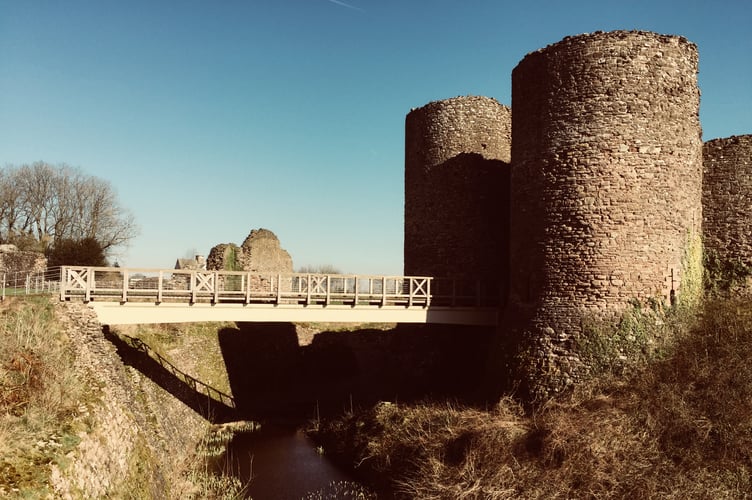
As in the way some people do, his general demeanor and slightly superior swagger would suggest that there is someone who considers himself a cut above, a man marked out from the common breed, either by personal distinction or high office.
That impression would deepen significantly when taking into account the nonchalant but watchful pair of men in close proximity to the painter of swans.
For they were high-ranking military personnel and the man at the easel was their prisoner. By night he was kept under lock and key at nearby Maindiff Court and by day he was allowed to roam the picturesque and surrounding area pretty much at will.
The curious-looking gentleman with the intense eyes, peculiar gait, foreign tongue, and brooding brows was well known amongst many of the locals - they called him the Abergavenny Kaiser. His real name was Rudolph Hess and he was once the Deputy Führer of Nazi Germany.
Over the centuries and down the decades Hess has just been one of many millions of visitors enraptured by the curious charm of White Castle.
To the modern eye, it might look like a storybook castle but this bastion of stone and history on a ridge high above the Monnow Valley was originally a formidable fortress and born out of a festering fear and hatred for the natives.
One look at the imposing and circular flanking towers standing in lonely majesty, its no-messing twin-towered gatehouse, and its wide water-filled moat will leave you in no doubt that White Castle was once a place of great military and strategic importance.
Today it’s a great place to have a kick about, a spot of cricket, or even a picnic, but way back when, and we’re talking beyond the reach of recorded history, the site of White Castle was thought to be the home of local chief Gwyn ap Gwaethfod.
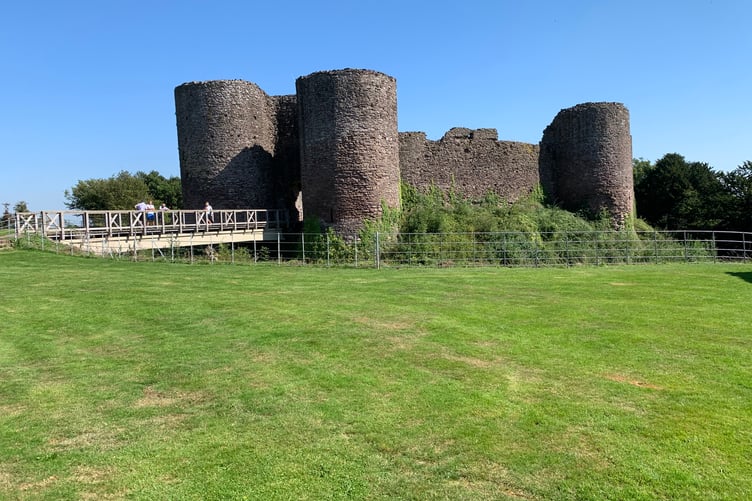
However, when the Normans invaded, Gwyn’s primitive fortress of wood was seen as being on an extremely strategic site which the French boys wanted for themselves, and so they took it.
Originally named Llantilio Castle after the neighboring village of Llantilio Crossenny, White Castle was so-called because of the distinctive white plaster that once covered its walls.
Sometime in the early 13th century, King John gave Hubert de Burgh control of the Three Castles, to aid the Normans in their continued subjugation of the Welsh.
The feudalism and oppression carried on for many a moon, until one fine day the sun rose in skies beneath which the castles lay in ruins. The land was at peace and the banner of the dragon flew high and free in the breeze once more.
Grosmont Castle
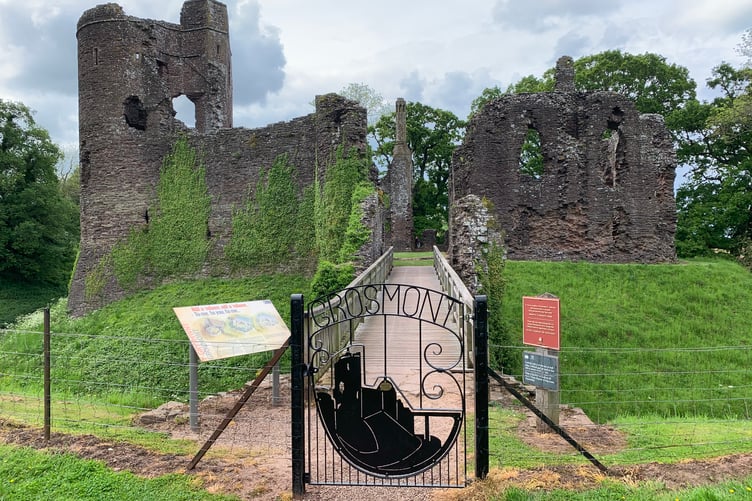
Like the village which surrounds and seemingly protects it like a community village green preservation society, Grosmont Castle has a sleepy ambiance of idle leisure and blissful purposefulness which can make a soul feel that worrying about the mundane and every day is about as productive as shouting at clouds.
The tall octagonal chimney whose fine gabled and coronetted top is still visible adds to the impression that once upon a time a mob of artistic types resided here who would spend their days reciting poetry, drinking fine wine, and playing chess.
Of course, first impressions can be misleading. Grosmont Castle was a thing of war not beauty and when Owain Glyndwr and his mob attacked in the early fifteenth century, there must have been some handy types on hand with the future King Henry, because they certainly managed to send the Welsh forces packing.
Soon after however the castle was abandoned and the forces of neglect moved in and set up camp, as moss took the place of oil paintings, the empty heavens replaced artfully crafted ceilings, and a murder of crows stood in for fair maidens.
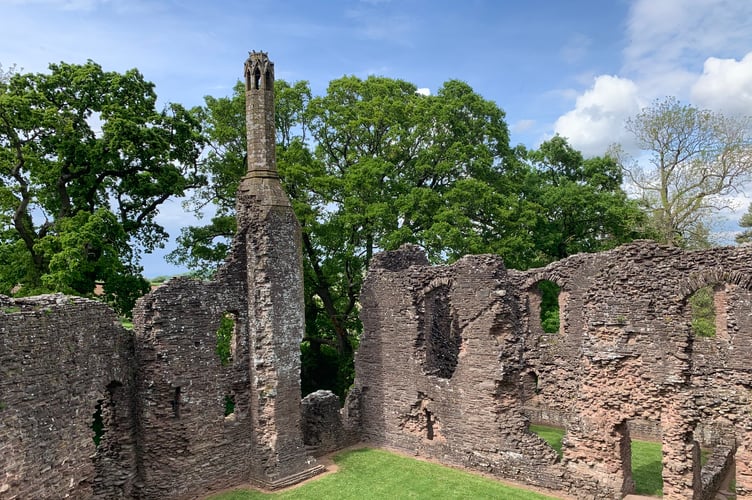
Today though, it’s a fine place to meander and let your imagination run riot. It’s also a perfect castle to circumvent and offers a circular walk which is by no means strenuous but somewhat delightful, a unifying factor all walks in close proximity to historic sites appear to share.
And if you’re thinking of visiting on a day when the skies are black and the downpour is damnable then you could do worse, because, on rare occasions when the wild Welsh rain falls for days on end without respite or reprieve, the moat around the castle once again fills with water and grants a rare rare glimpse into the past, and nigh-on perfect photo opportunity, of what this defensive measure must have looked like when fully operational.
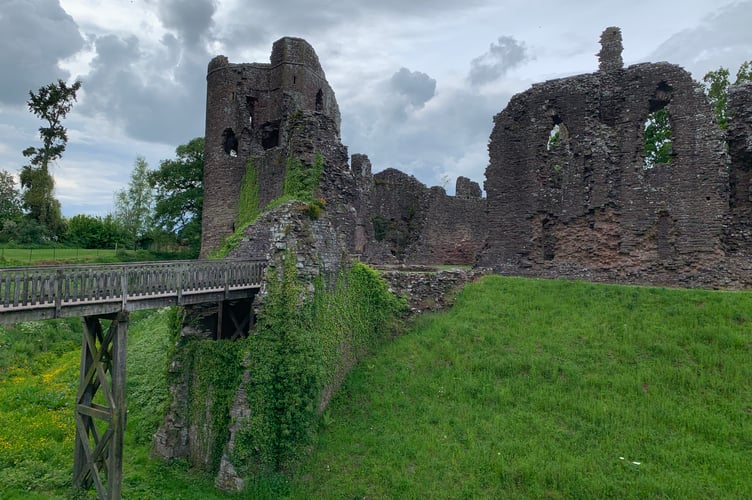
Monmouth Castle
Out of all of Monmouthshire’s castles, it’s probably the one which lies in the town which gives the county its name which is the least impressive, and that’s mainly because not much of it is still standing.
Perched high on a hill above the River Monnow and close to the hustle and bustle of the marketplace, Monmouth Castle once served an important role as a bastion for the marcher lords.
Not content with being the lord of the manor at Chepstow, William FitzOsbern decided he needed a castle in Monmouth as well.
What was once made out of wood turned to stone by 1150 and over the years various lords ensured that an impressive gatehouse, curtain wall, and great round keep, all conspired to make this a castle worth talking about.
Another notable thing about Monmouth Castle is on 16 September 1387, King Henry V of Battle of Agincourt fame was born here.
As with so many castles, the Civil War put an end to the mighty Monmouth masterpiece, and in 1647 on March 30, townsmen and soldiers began pulling down the great round tower and the end was nigh.
In 1673, Henry Somerset, the 1st Duke Of Beaufort, built the Great Castle House on the site which has been described as "a house of splendid swagger outside and in.”
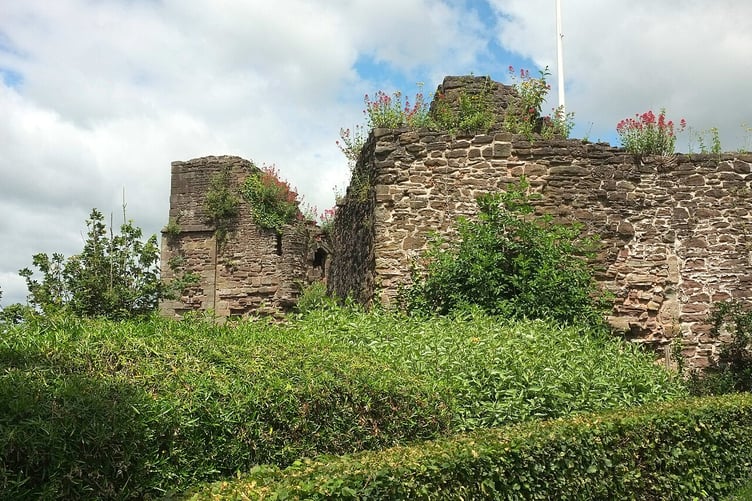
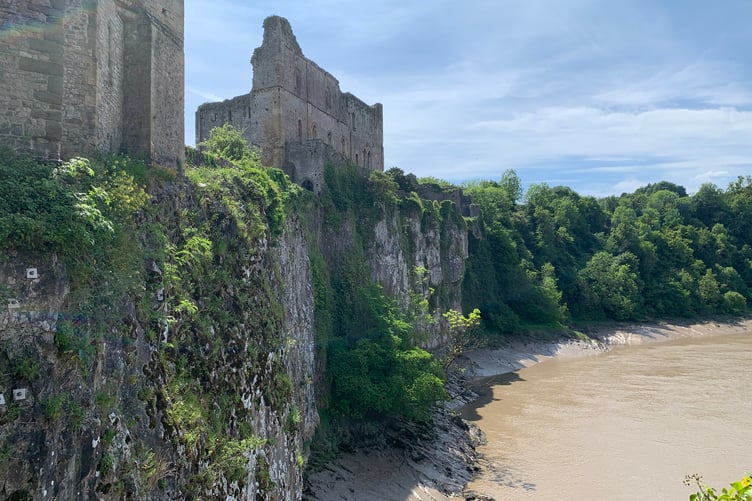
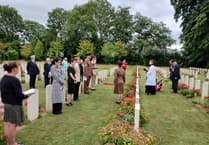


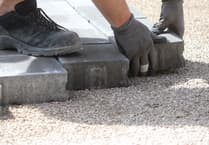
Comments
This article has no comments yet. Be the first to leave a comment.